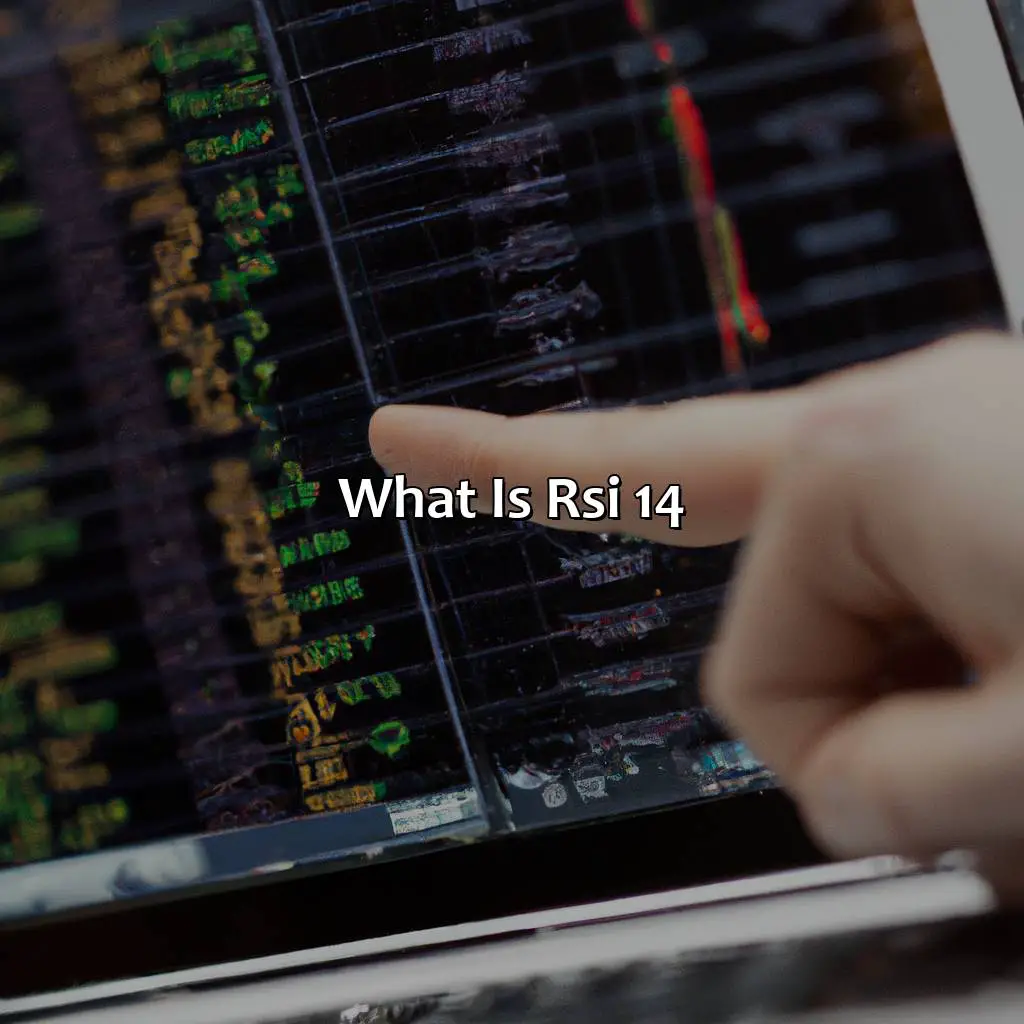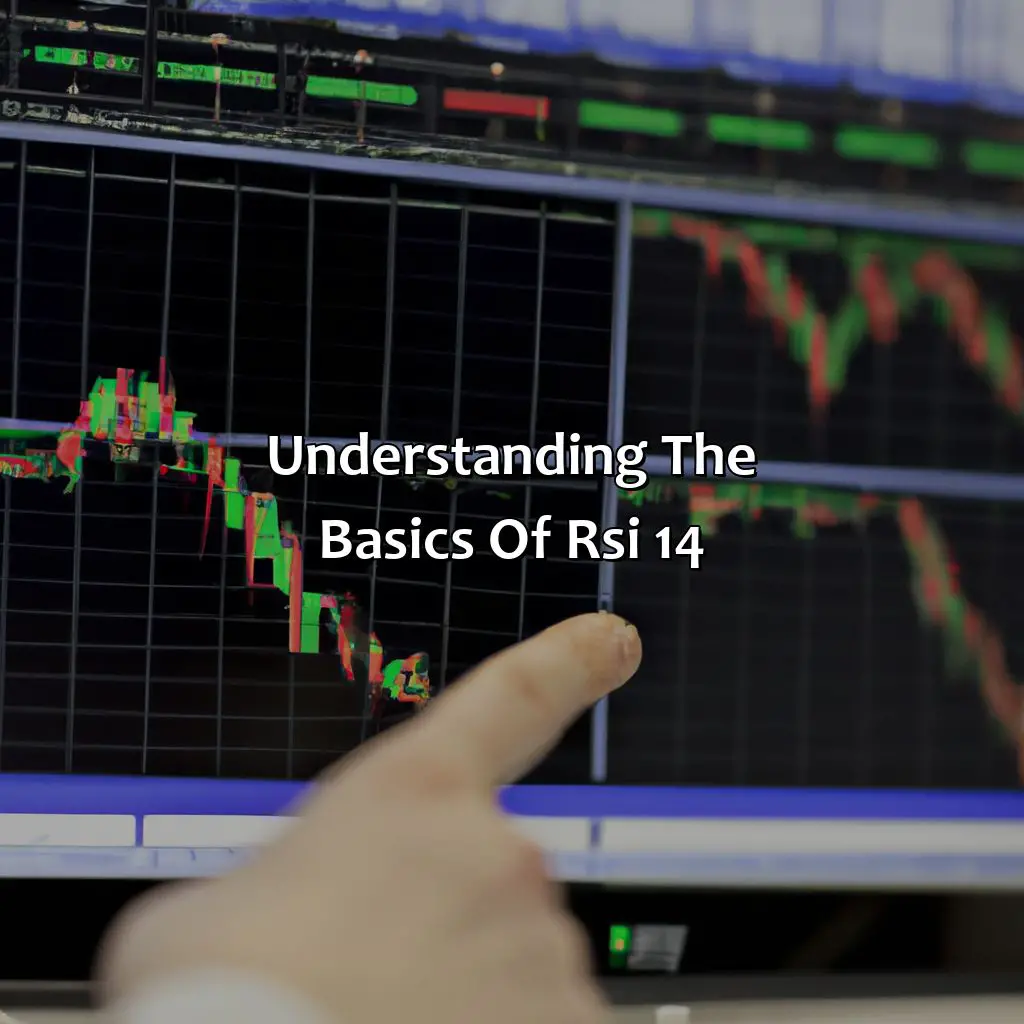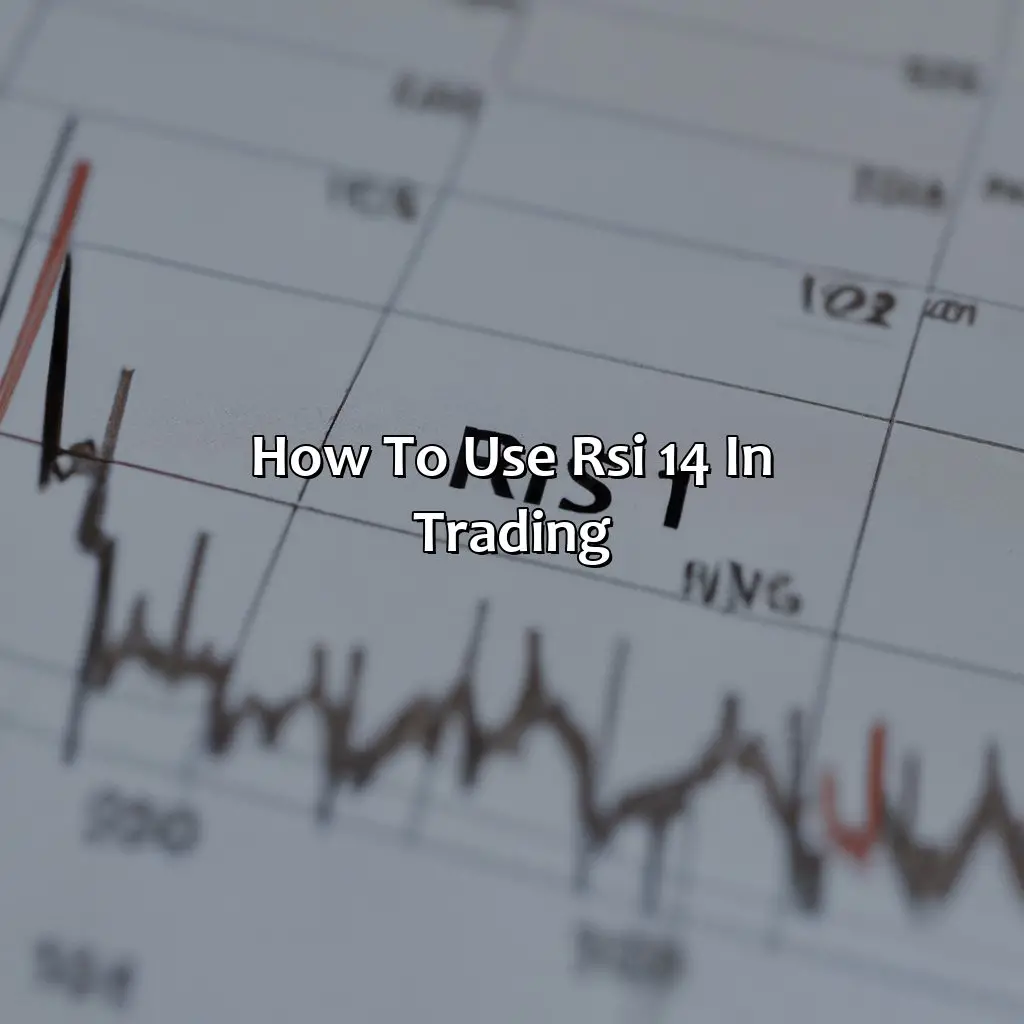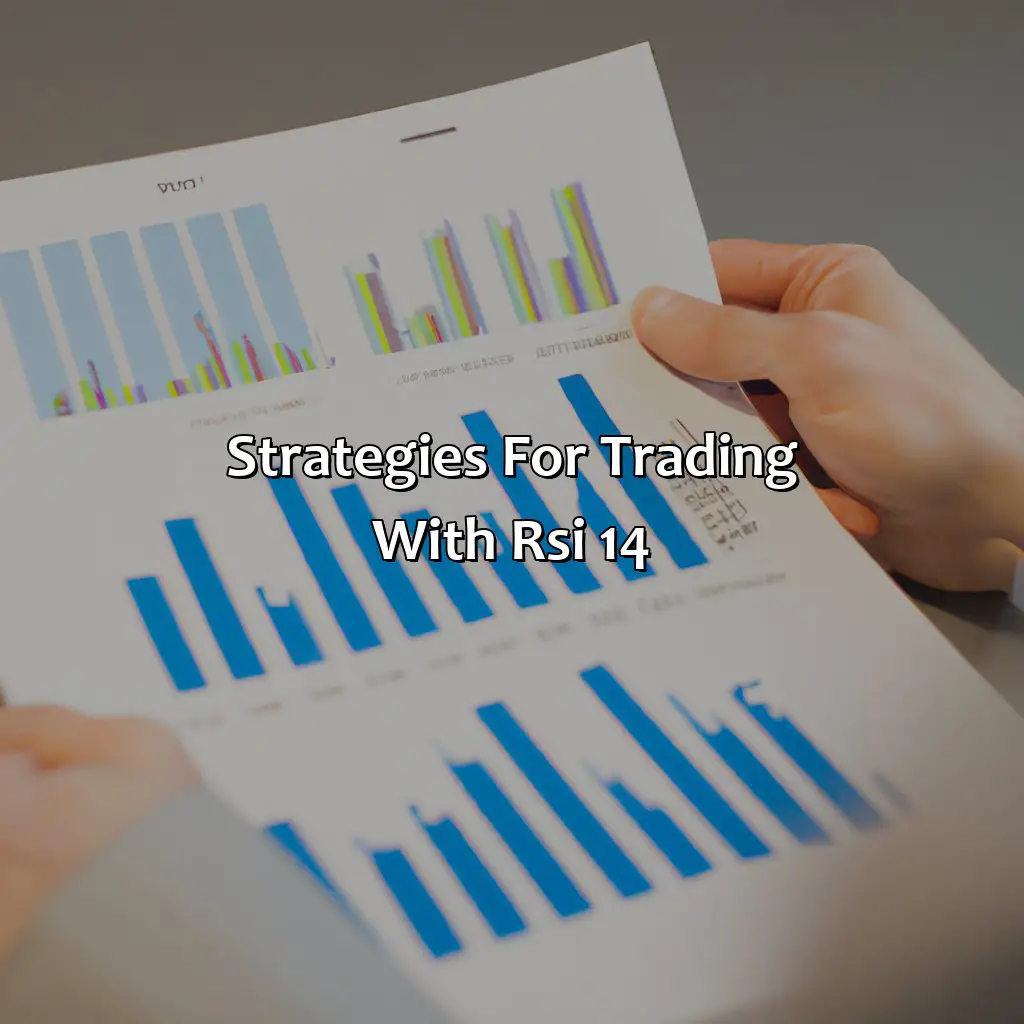
Key takeaway:
- RSI 14 is a technical analysis momentum indicator that measures overbought and oversold market conditions, divergence analysis, and trend confirmation. It is an important tool for traders in measuring the strength of a trend and identifying potential changes in market conditions.
- The formula for calculating RSI 14 is based on the average gains and losses over the past 14 periods. The importance of RSI 14 lies in its ability to provide traders with a clear indication of market sentiment and trend strength.
- Traders can use RSI 14 to identify overbought and oversold market conditions, which are typically indicative of potential trend reversals. Divergence analysis with RSI 14 can also be used to identify potential changes in market direction. Additionally, traders can use RSI 14 to confirm trends and develop trading strategies that are effective in both trending and ranging market conditions.
- When using RSI 14, traders should consider setting appropriate timeframes, waiting for confirmation to avoid false signals, and managing risk by setting stop losses and take profits. Combining RSI 14 with other indicators can also lead to higher accuracy in trading decisions.
- In conclusion, RSI 14 is a valuable tool for traders in identifying potential market conditions and developing effective trading strategies. By understanding its formula, importance, and various application, traders can utilize this indicator to improve their trading performance and achieve consistent profitability.
What is RSI 14?

Photo Credits: forexbrokerreport.com by Thomas Baker
RSI 14, a technical analysis tool, is a momentum indicator used to identify when an asset is overbought or oversold. Calculated by measuring the magnitude and velocity of price movements, it compares the average gains versus the average losses of a predetermined period, typically 14 days.
Traders often use RSI 14 to confirm price trends, generate buy or sell signals, and determine risk levels. It provides insights into market strength and can be used in conjunction with other technical analysis tools.
One unique feature of RSI 14 is its ability to indicate divergence between the indicator and the price movement, which may signal a potential trend reversal.
A true history of RSI 14 involves its creation by J. Welles Wilder Jr. in the late 1970s. Its popularity grew as traders recognized its effectiveness in analyzing asset momentum. Today, it remains a widely used tool among technical analysts in various financial markets.
Understanding the basics of RSI 14

Photo Credits: forexbrokerreport.com by Lawrence Lopez
To grasp the fundamentals of RSI 14 in trading, become familiar with its formula and importance. Calculate RSI 14 with a simple formula. This helps traders detect if the market is overbought or oversold. This info is useful for making technical analysis and trading decisions.
Formula for calculating RSI 14
RSI 14 is a technical indicator used to measure the momentum of an asset’s price movement. The formula for calculating RSI 14 is based on the average gains and losses in price over a set time period, typically 14 days.
To calculate RSI 14:
- Identify the change in price from the previous period (Upward Movement or UM) and record it as positive.
- Identify the change in price from the previous period (Downward Movement or DM) and record it as negative.
- Calculate the Relative Strength (RS) by dividing the sum of all positive movements by the sum of all negative movements.
- Calculate the Relative Strength Index (RSI) by applying a formula that incorporates RS to provide a value between 0 and 100.
Unique details about RSI 14 calculation include that values greater than 70 are often interpreted as indicating an overbought market condition, while values less than 30 may indicate an oversold market condition. However, traders should use their discretion when interpreting RSI values depending on market conditions.
For those interested in maximizing trading potential, understanding how to calculate RSI 14 can be critical knowledge needed for financial success. Don’t miss out on these market insights; understand how to use RSI in your trading strategy today!
RSI 14 is an essential tool for traders who want to avoid being caught on the wrong side of market trends.
Importance of RSI 14 in trading
RSI 14 is an essential tool in technical analysis and has great importance in trading. It is commonly used to identify overbought and oversold market conditions, divergence analysis, and confirm trends.
Traders use RSI 14 to gauge whether a security is overbought or oversold, potentially signaling a trend reversal. This information can be invaluable for traders who are using momentum-based strategies.
Moreover, using RSI 14 for divergence analysis can help traders detect potential trends before they occur. By tracking the price movements of an asset with its RSI 14 indicator, indications of divergences between the two patterns may be revealing.
In addition to this, RSI 14 can confirm a trend that is already in place. This confirmation allows traders to make more informed decisions on their trades, increasing the chances of profitability.
To make better use of RSI 14 when trading, traders should consider combining it with other indicators for higher accuracy. This tactic can provide additional data that will result in stronger signals and more successful trade outcomes.
Setting appropriate timeframes for the RSI 14 is crucial when trading as well because it can affect the signal outcomes significantly. Traders also need to avoid false signals by waiting for confirmation and manage their risk by setting stop losses and take profits at suitable levels.
Going down the RSI 14 rabbit hole, discover how to trade smarter by identifying overbought/oversold market conditions, spotting trend reversal signals, and confirming trends with one simple indicator.
How to use RSI 14 in trading

Photo Credits: forexbrokerreport.com by Austin King
To use RSI 14 in trading, you need to be familiar with some sub-topics. Identifying overbought and oversold conditions is key. RSI 14 can also show divergence, which can be valuable. Lastly, using it to confirm trends is a popular trading strategy.
Identifying overbought and oversold market conditions using RSI 14
The Relative Strength Index (RSI) 14 is an important tool in trading to identify potential market conditions of being overbought or oversold. RSI 14 can help traders anticipate a potential change in market direction and assist in making informed trading decisions. By using RSI 14, traders can determine whether a currency pair or security is experiencing an upward or downward trend. This information can be helpful when deciding whether to enter or exit the market.
To use RSI 14 to identify overbought and oversold market conditions, traders need to look for indicators that signal a potential change in trend. Overbought conditions occur when the price has risen too far, too fast, indicating that it may soon start to decline. Conversely, oversold conditions occur when the price has fallen too far, too fast and may be due for a reversal soon. With RSI 14, traders can view clear signals that indicate the relative strength of both buying and selling pressure within the marketplace.
A unique aspect of RSI 14 is that it can provide insight about market momentum beyond simply identifying overbought and oversold conditions. The indicator also shows traders how strong momentum is moving based on how long it has been since bullish momentum took hold versus bearish momentum.
To truly take advantage of RSI 14’s predictive power when identifying overbought or oversold market conditions, traders should use other charting tools in conjunction with this powerful indicator. For example, incorporating candlestick charts into your analysis can allow you to have more confidence in your trades by giving you even more temporal context based on historical data.
Don’t miss out on trading opportunities by neglecting this tool! Incorporate RSI 14 into your technical analysis today for better results tomorrow. By staying informed about overbought and oversold conditions in the markets, you will improve your accuracy and achieve greater profitability while minimizing your risk profile at the same time.
Divergence analysis with RSI 14 – because spotting differences in market trends can lead to profitable trades.
Using RSI 14 for divergence analysis
RSI 14 is a popular technical indicator for trading that measures the strength and direction of price movements. When it comes to trading, using RSI 14 for divergence analysis can provide valuable insights into market trends and potential opportunities for profitability.
Here is a step-by-step guide on how to use RSI 14 for divergence analysis:
- Identify the direction of the trend.
- Look for discrepancies between price movements and RSI 14.
- Confirm the discrepancy with other indicators or chart patterns.
- Determine if the discrepancy signals a reversal in the trend.
- Place a trade based on your analysis.
- Use stop losses and take profits to manage your risk.
It’s important to note that using RSI 14 for divergence analysis should be done in conjunction with other technical indicators and chart patterns to confirm potential opportunities for trading.
In addition, mastering divergence analysis takes time, experience, and patience. As an essential element of successful trading, you must be committed to learning new strategies, staying updated on market trends, and continually improving your analytical skills.
Don’t miss out on maximizing your profitability by neglecting this crucial aspect of trading. Incorporate RSI 14 divergence analysis into your trading plan today! RSI 14 confirms trends like a loyal sidekick, guiding traders towards profitable opportunities.
Using RSI 14 to confirm trends
To confirm trends while trading, traders can use the RSI 14 indicator. This tool helps identify whether an asset is trending or not, and it indicates when a trend may be ending.
A step-by-step guide to using RSI 14 for trend confirmation includes:
- Identify the trend direction by analyzing price action
- Use RSI 14 to confirm the trend by observing its value level
- When prices are rising, RSI 14 should stay above 50 for an uptrend confirmation
- When prices are falling, RSI 14 should stay below 50 for a downtrend confirmation
- A deviation from these values may indicate that the trend is weakening
In addition to using RSI 14 as a standalone tool for confirming trends, it can also be combined with other indicators like Moving Averages or Fibonacci Retracements to increase accuracy and reliability.
It’s essential to set appropriate timeframes when using RSI 14 to avoid misleading signals caused by short-term market fluctuations. Traders can avoid false signals by waiting for confirmation before entering or exiting a trade.
A true history of trend confirmation and trading includes how traders have been using RSI since its creation in the late ’70s by J.Welles Wilder Jr., who wanted a tool that could measure momentum and confirm market trends accurately. Today, RSI is one of the most widely used indicators across various financial markets and asset classes.
Maximize your trading accuracy by combining RSI 14 with other indicators in your trading strategy.
Strategies for trading with RSI 14

Photo Credits: forexbrokerreport.com by Benjamin Rivera
RSI 14 is a tool with high accuracy for advancing trading strategies. This section focuses on using RSI 14 as a standalone indicator. You can also gain higher accuracy through combining RSI 14 with other indicators. Get an in-depth look into how to incorporate RSI 14 into trading for maximum success in these two sub-sections.
RSI 14 as a standalone indicator for trading
The RSI 14 is a commonly used standalone indicator for trading in the financial markets. This popular technical analysis tool indicates when an asset has been overbought or oversold, making it easier to determine optimal entry and exit points.
Traders can use the RSI 14 to identify bullish or bearish market trends by analyzing price changes over a specified period. Its accuracy in identifying market momentum makes it an attractive tool for investors who are trying to maximize profits.
Using the RSI 14 as a standalone indicator for trading allows traders to make informed decisions about their investments without relying on other indicators or fundamental analysis. This can be particularly useful for those who prefer a simplified approach to trading and seek higher accuracy levels.
To use the RSI 14 effectively as a standalone indicator, traders should set appropriate timeframes and avoid false signals by waiting for confirmation before making any trades. By managing risk through setting stop losses and take profits, traders can avoid major losses in their portfolios.
While combining the RSI 14 with other indicators may lead to even higher accuracy rates, using it as a standalone tool provides adequate insights into the market’s direction and momentum.
Combining RSI 14 with other indicators is like getting a wingman for your RSI game, increasing accuracy and potential profitability.
Combining RSI 14 with other indicators for higher accuracy
Combining Indicators with RSI 14 for Enhanced Precision in Trading
Utilizing different indicators during trading is one of the most productive approaches to ensure that you are making sound decisions. It’s highly recommended to combine RSI 14 with other indicators to increase the accuracy of trading signals.
– One approach is to use the Moving Average Convergence Divergence (MACD) indicator, which provides a useful visual representation of market trends alongside RSI 14’s overbought and oversold conditions.
– Another popular combination is pairing up the Relative Vigor Index (RVI) with RSI 14, as both work similarly but monitor changes in another currency pair or security.
– Additionally, traders can integrate Bollinger Bands with RSI 14 to measure market volatility and identify potential price breakouts in real-time.
These combinations aid in higher accuracy and more reliable entry/exit points when used appropriately.
An essential aspect to consider while combining indicators is that having coherent data across those indicators ensures that there won’t be any discrepancies or opposite interpretations. This results in precise trade signals for traders.
Pro Tip: Combining multiple technical analysis tools, including RSI 14, as part of an overall strategy can deliver considerable benefits beyond relying only on a single indicator.
Proper timeframe selection is key, don’t let false signals sour your trades, and always mind your risk with stop losses and take profits when using RSI 14 effectively.
Tips for using RSI 14 effectively

Photo Credits: forexbrokerreport.com by Gabriel Sanchez
RSI 14? Here are some tips to use it in your trading strategy!
- Timeframes? Choose wisely – depends on the market.
- False signals? Avoid them – wait for the confirmations.
- Risk Management? Stop losses and take profits – great for trading outcomes.
Setting appropriate timeframes for RSI 14
Determining the appropriate timeframe for using RSI 14 is crucial to its effectiveness in trading.
- Consider the trader’s trading style and objectives, as these will influence the desired timeframe.
- For short-term traders, a timeframe of 5-10 days may be sufficient, while long-term traders may prefer a timeframe of 20-30 days.
- It is also important to consider the asset being traded, as volatility varies between different assets and can impact the chosen timeframe.
- Additionally, look for a timeframe that aligns with other technical indicators being used to confirm signals.
- Backtesting different timeframes and observing which timeframes consistently generate profitable trades can help determine an optimal timeframe for RSI 14 for that particular asset or market situation.
- Last but not least, remain flexible and adjust timeframes according to changing market conditions or objectives.
Setting an appropriate timeframe for RSI 14 can significantly impact its effectiveness in trading strategies.
It is essential to remember that using a specific numerical value or range for the period setting of an indicator does not guarantee success. This guideline should serve as a starting point for identifying what might help increase the probability of identifying profitable trades or opportunities.
Traders must continue learning and adapting their RSI 14 settings according to market dynamics when looking to leverage it in trade.
Don’t miss out on potentially profitable opportunities by overlooking setting the right timeframe for RSI 14. Take action now and identify your optimal time interval.
Jumping the gun on a trade is like diving into a murky pool without checking the depth – wait for confirmation to avoid false signals.
Avoiding false signals by waiting for confirmation
To ensure accuracy in trading with RSI 14, investors must avoid false signals and wait for confirmation. This involves a particular approach to analyzing market trends and movements, explained below.
- Analyze the chart: Observe the price action in the chart and look for a trend in the stock’s price movement.
- Wait for confirmation: After analyzing the chart, wait for confirmation of the trend. For example, if there is an uptrend, wait for the RSI 14 to go into oversold before taking action.
- Avoid false signals: Be patient while waiting for confirmation as this helps avoid false signals that could lead to losses.
It is essential to understand that trends do not always confirm immediately as per previous observations but can deviate through consolidation or breakdown entirely. Therefore being vigilant about false signals is necessary.
It is important to note that waiting for confirmation does not mean postponing or delaying your trades, rather it’s about recognizing potential situations where there may be a high probability of generating profits from trading when taking certain positions.
In history, many investors have made huge losses due to impulsive actions based on appearing signals which tend out to be inaccurate in reality. Hence it’s crucial becoming more precise by avoiding false signals and confirming market movements before taking any action – whether buy/sell orders. Don’t gamble with your trades, manage your risks with stop losses and take profits.
Managing risk by setting stop losses and take profits
Proper risk management is crucial in trading, and setting stop losses and take profits is one strategy to mitigate risk. By limiting potential losses while locking in gains, traders can protect their capital and optimize profits.
Here is a 6-Step Guide to managing risk by setting stop losses and take profits:
- Define your risk tolerance: Determine how much you are willing to lose on any given trade.
- Set your stop loss: Place a stop loss at a price point that aligns with your risk tolerance. This will help you exit the trade if the price moves against you.
- Identify your take profit target: Look for a price level that would signal that your desired profit has been reached.
- Adjust your stop loss as the price moves in your favour: As the price increases, adjust your stop loss upwards to protect potential profits.
- Avoid moving or canceling stops once they have been set: Stick to the plan you made before entering the trade.
- Evaluate and adjust orders as market conditions change: Be open to modifying target prices or revising stops if new information suggests that doing so could improve results.
It’s important to note that no strategy can guarantee success, but utilizing these steps for managing risk can maximize control over losses and gains.
To further improve your approach to risk management through setting stop losses and take profits, consider adjusting these orders based on technical analysis indicators like RSI 14 instead of solely relying on fixed levels. Using signals from such indicators can assist in identifying trends or reversals early.
Pro Tip: When placing trades involving higher degrees of leverage, such as margin trading, be extra careful with risk management as mistakes could have amplified effects.
Five Facts About Using RSI 14 In Trading:
- ✅ RSI 14 is a technical indicator used to measure the momentum of a stock or currency pair. (Source: Investopedia)
- ✅ A reading above 70 on the RSI 14 is considered overbought, while a reading below 30 is considered oversold. (Source: DailyFX)
- ✅ Many traders use the RSI 14 in combination with other technical indicators, such as moving averages and Bollinger Bands. (Source: Trading Strategy Guides)
- ✅ The RSI 14 can be used to identify potential trend reversals and support and resistance levels. (Source: My Trading Skills)
- ✅ It is important to use the RSI 14 in conjunction with other forms of analysis and not rely solely on it for trading decisions. (Source: The Balance)
FAQs about How Do You Use Rsi 14 In Trading?
How do you use RSI 14 in trading?
RSI 14 is a popular technical analysis tool used by traders to gauge market momentum. Here are some steps to use RSI 14 in trading:
- Identify the trend: Determine if the market is in an uptrend, downtrend, or sideways movement.
- Calculate RSI: Use a formula to calculate RSI based on the price data of the underlying asset.
- Set threshold levels: Determine the levels at which the RSI will indicate an overbought or oversold condition.
- Interpret RSI signals: If the RSI crosses above the overbought threshold, it indicates bullish momentum. If it crosses below the oversold threshold, it indicates bearish momentum.
- Trade accordingly: Use the RSI signals to plan your trades, such as entering a long position when the RSI crosses above the oversold threshold, or closing a short position when the RSI crosses above the overbought threshold.
What is RSI 14?
RSI 14 is a technical indicator used in financial analysis to measure the strength and weakness of the price of a security. It is called the Relative Strength Index and has a range of values between 0 and 100.
How do you calculate RSI 14?
RSI 14 is calculated using a formula based on the average gains and losses in the price of a security over a certain period of time. The formula for RSI 14 is as follows:
RSI 14 = 100 – (100 / (1 + RS))
Where RS = Average gain of up periods / Average loss of down periods
What values indicate overbought and oversold in RSI 14?
In RSI 14, readings above 70 indicate overbought conditions, while readings below 30 indicate oversold conditions. Traders use these levels as potential signals to either buy or sell.
Can RSI 14 be used for short-term trading?
Yes, RSI 14 can be used for short-term trading. However, traders may need to adjust the parameters based on the time frame in which they are trading. For shorter time frames, smaller values may be used, while larger values may be more appropriate for longer time frames.
Can RSI 14 provide false signals?
Yes, RSI 14 can provide false signals. Traders should not rely solely on RSI 14 when making trading decisions but should instead use it in conjunction with other technical analysis tools and market indicators.


